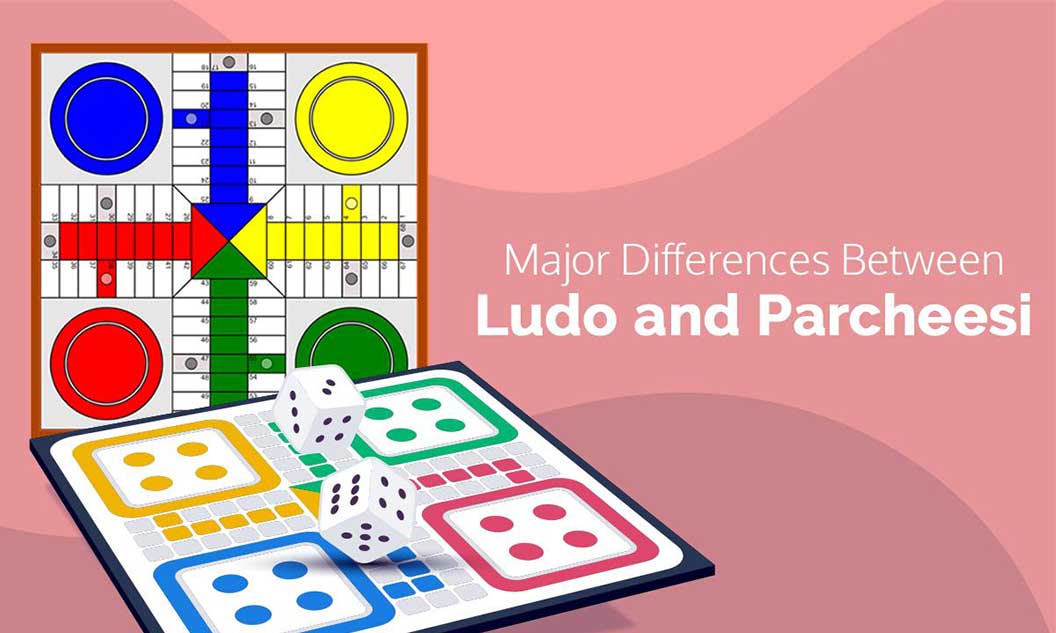Blog
Major Differences Between Ludo and Parcheesi
Major Differences Between Ludo and Parcheesi
In 2022 board games are on the rise to take over all digital gaming formats with their simplistic gameplay, which is quite attractive to audiences worldwide. Board games, especially Ludo, have a nature to them that is unique and incomparable to other forms of gaming that give them massive demand in the sphere of real and online gaming.
Parcheesi and Ludo are phenomenal games that can be played on the internet by people well around the globe. This is because these games of old seem to have a better audience in modern times than they used to in the past few decades due to the widespread and easy access to the internet.
To try and Play Online Ludo Game, visit one of the popular websites and get a hold of the best app for your phone.

Let’s check out the many features of Ludo and Parcheesi to determine how they differ in their variable aspects.
Origin
Ludo is a game that has been central to India since immemorial and was celebrated as Pachisi in olden times. It was later taken by the British and rebranded in England as Ludo after stripping off its Indian Mughal heritage in 1896. In ancient cave paintings, you will find the mention of Ludo mainly in the form of drawings and carvings.
This game, initially termed Pachisi, was played way back in the royal court by kings and queens, where a more ornamented version of the game was played along with certain expensive pieces used as tokens.
On the other hand, the Parcheesi game is an American product that was first introduced in 1874. This has been borrowed again from the Indian game Pachisi with slight tweaks and modifications done to the main game to suit the western audience.
Also Read: Virtual Casino Games Vs Live Dealer Casino
Dice Use
Ludo uses one dice, whereas the game of Parcheesi is played with two. You must roll both dice simultaneously in Parcheesi to get your desired score and move your pieces ahead. In Ludo, you must roll a six on the dice to move your tokens in the playing area.
For Parcheesi, the idea is to roll a five, and only in that manner can you start moving your pieces in the game. From then on, the game is similar to Ludo’s, and you have to move the pieces along the lines as long as you do not get to the final winning patch of your color.
In Parcheesi, if you roll the same numbers on both dice, you are granted another go at the same round, whereas in Ludo, you get a double chance if you roll sixes with your dice. This makes pieces in Parcheesi move ahead much faster than Ludo if you are interested in measuring the speed of play in both games.
Board Type
In Ludo, the board is shaped like a square, and you get somewhat squared boxes to play your pieces. The playing area is cross-shaped, and each arm of this structure has three extensions. In these columns, there are six squares, and players can move the pieces along these specific lines only.
The middle column is a colored patch and can only be accessed by the pieces that belong to the same color. You can reach your home-colored patch after making a full round of the Ludo board.
The finishing grid in Ludo is a large square, and for Parcheesi also, it is the same. In Parcheesi, however, the board also has a cross type of board, but the arms on each cross have eight squares rather than six.
The unique feature of Parcheesi is that it has 68 squared places circling the board. Among these places, 12 are of a darkened color and are known as safe places.
Visual Difference
Parcheesi is a game that is visually quite bland when compared to Ludo. The board is dull, and you do not get much colorful experience playing the game.
On the other hand, in Ludo, there are vibrant colors, and you enjoy playing the game with your friends. It is a satisfying experience regardless of where you stand in the final position of the game, as soothing colors alleviate your stress levels after a long day at work.
Coin Piling
In Parcheesi and Ludo, you can pile coins on top of each other, but the limit is quite different. In Ludo, the coins you can pile over one another have no limit, and usually, you can see players piling up to three coins together and moving them across the board.
It is not unnatural but sometimes proves to be a practical move against good rivals. If the pieces move this way, they cannot be crossed easily or overtaken by opponent pieces.
When the player rolls the dice to move these combined pieces, he has to throw figures in multiple of the set, or else he has to choose to move any one piece for that given turn.
In the case of Parcheesi, this piling of coins can only offer up to two coins in one place. The game’s rules do not allow players to place more than one at one position on the board.
Also Read: How to Prevent Malware Attacks: Security Tips
Final Words
These two games of Ludo and Parcheesi can be easily called siblings though they reside in opposite parts of the world.
In modern times as everything is converging into one singular existence due to the rise of digital gaming, the places are getting nearer on a virtual note, and the underlying differences seem to be the only way of separating these two games from becoming one.
Next time you play these board games, you can identify them quickly with these subtle differences that usually fly under the radar if not mentioned.
